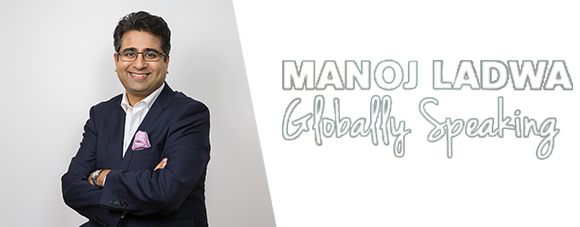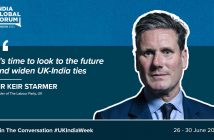As pointers to the direction his government proposes to take India in, Prime Minister Narendra Modi’s Independence Day speech can’t be faulted.
His focus on sanitation, safety of the girl child, village development, mutually beneficial ties with neighbouring countries, skill development for the youth, manufacturing and exports has set the tone for governance in the months ahead.
Critics can carp about the things he didn’t talk about – price rise, corruption, terrorism, poverty and economic reforms – but that would be nitpicking. Let us leave that to the politicians and sundry other opposition groups.
For the limited purpose of this article, let us focus, instead, on the issues that he raised, many of which have important and wide ranging economic spinoffs.
Modi exhorted foreign investors to set up factories in India and turn India into a manufacturing hub. Addressing the nation from the ramparts of the historic 17th century Red Fort built by Emperor Shah Jahan, who also built the Taj Mahal, on the occasion of India’s 68th Independence Day, he said: “I would like to call people of the world to ‘come, make in India’. Come here and manufacture in India. Sell the products anywhere in the world but manufacture here… we have the power, come, I am inviting you.” In effect Modi is backing Indian innovation and talent in a big way to make it happen and that too to world class standards. Possible?
Modi swept to power in May this year promising, among other things, to turn India into a global manufacturing hub. A massive surge in manufacturing is the only way the government can generate enough jobs to absorb the army of 12-15 million youth who join India’s workforce every year.
But that will be easier said than done. Policy and administrative paralysis, problems over land acquisition, rampant corruption, delays in granting environmental clearances and red tape have hamstrung the sector for decades and limited its share in India’s GDP to a mere 17 per cent.
India ranks a poor 133rd out of 182 countries in the World Bank’s Ease of Doing Business Index. Examples abound, mostly notably of Arcelor Mittal and Posco, of projects that have not taken off even after a decade.
However, since Modi’s election two and a half months ago, investment proposals worth about $80 billion have poured in from foreign and domestic companies, signally a renewal of investor interest.
In a bid to streamline procedures the government has taken several small steps towards making India an attractive investment destination.
1. It has amended the rules, severely curtailing the power of local, petty officials to hold up projects on one pretext or the other with the covert intention of extracting bribes.
2. It has hastened the pace of environment clearances. Under Jairam Ramesh and Jayanti Natarajan in the previous Congress-led regime, the absence of clearances from the environment ministry and new unambiguously anti-industry legislations became the single biggest roadblock to growth. There lacked a sensible balance between the views of activists and of industry. This ministry was single handedly responsible for a disproportionately large number of the $120-billion projects that stalled in various stages of implementation over the last four to five years. This discouraged other investors from committing any fresh investments. Result: the investment cycle stalled; economic growth plummeted for sub-5 per cent levels in 2012-13 and 2013-14 from 9 per cent-levels in the years before that, and job opportunities shrank.
3. It has introduced self-certification and online applications in many spheres to cut out corruption, making the process transparent and unclogging the stalled decision-making system.
4. Most importantly, the Prime Minister has personally met every secretary in every ministry and assured them of full support for any bona fide decisions they take in the course of their work. This is already showing results: decisions are being taken once again and the policy paralysis that had marked the last years of the Congress-led regime is fast becoming a thing of the past.
5. And finally, the government has taken baby steps towards reforming India’s archaic labour laws that discourage companies from hiring permanent staff and freeing up the jobs market to create more meaningful jobs at a living wage. Here again a sensible balance between the rights of workers and the needs of business had been lost in the dogma of the past.
Then, Modi said he wanted the youth to turn entrepreneurs and urged industry to adopt a “zero defect, zero effect” approach. These, and various other steps that the government is contemplating, are expected to help the government reach its goal of increasing the contribution of the manufacturing sector to 25 per cent of GDP in 10 years. “Your efforts should cause no harm to the environment,” he said, explaining what he meant by “zero effect”.
The goal, he added, was to make the “Made in India” brand synonymous with high quality products.
Skill development, another focus area in Modi’s speech, is a huge necessity in a country where more than 70 per cent of fresh graduates – even from Tier 3 and Tier 4 engineering colleges – don’t have skills that can be deployed in industry.
It has received lip service in the past but if the current BJP-led government can make a difference on the ground, it will go a long way towards ensuring a brighter future for the millions of youth who voted Modi in the hope of ushering in “achcche din” (better days).
One issue that hasn’t attracted any attention is the economic spinoff of the plan to build toilets in every school and in every home. Let us assume, in the absence of any other data, that a toilet will have to be built for each of the 75 million poor households that will be given access to bank accounts under the “Jan Dhan” (people’s money) scheme announced by the Prime Minister on August 15.
Let us also assume, very conservatively, that each toilet – masonry work, sanitary ware and plumbing – costs Rs 10,000 to build. We are then looking at a capital expenditure of $12.5 billion. That’s a $12.5 billion opportunity for Indian and foreign construction companies, contractors, suppliers, consultants and jobseekers!
With a multiplier effect of three, we are then looking at a $35-billion economic impetus to the Indian economy over the next five years. This initiative alone can, therefore, provide a 0.25 to 0.50 percentage point impetus to GDP growth.
Modi has outlined his vision. The outcomes will depend on implementation.
We will keep our fingers crossed.
The above article was first published on India Inc www.indiaincorporated.com
Manoj Ladwa is the founder of India Inc and chief executive of MLS Chase Group @manojladwa







